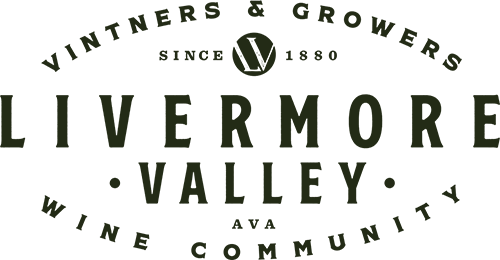Written by Livermore Valley Winegrowers Association
The Terroir of Livermore Valley Wine Country
Article by HearHere Productions
It reads like the name of a horror movie but is the complete opposite! Actually, the word “terroir” means “soil” in French and when you’re talking about a wine-growing region, otherwise known as a “Viticultural Area,” the soil is of utmost importance. The French use the phrase “gout de terroir” when speaking of certain wines. It translates to “taste of the soil” and no, it doesn’t mean that the wine taste like dirt, it refers to that rich, earthy flavor that some wines carry.
Especially in the wine world, in addition to the type of soil, terroir also refers to other geographic and climatic conditions of the region, such as the elevation, the amount of sunshine, temperatures (both daytime and nighttime), amounts of precipitation during the different growing phases of the grapes, and other factors. All these conditions combined with the type of grape and the expertise of the winemaker are what gives a wine its distinctive flavor…its personality.
Here in the Livermore Valley, the terroir is right for grapes, something that was noticed by Robert Livermore who planted the first commercial vines here back in the 1840’s. The city, the valley, and the Livermore Valley American Viticultural Area are all named for Livermore who owned many acres in the valley in those days.
Okay, back to the terroir…the soil in the Livermore Valley is primarily gravel with excellent drainage, a soil type that reduces the vines’ vigor and increases flavor concentration in the grapes.
The Livermore Valley has an east-west orientation, making it unique among northern California winegrowing regions. It is 15 miles long east to west, 10 miles wide north to south, and surrounded by coastal range mountains and foothills. The east-west orientation of the valley allows the coastal fog and marine breezes to come in from the Pacific Ocean and the San Francisco Bay and cool the valley’s warm air, resulting in warm days and cool nights– ideal conditions for producing fully ripened, balanced fruit.
One of the original wineries in the valley was the Cresta Blanca Winery that produced its first wines in 1884. A dry white wine produced at Cresta Blanca won the 1889 Paris Exposition Grand Prix and became the first California wine ever to win a competition in France. This was almost 100 years before the Judgement of Paris that made Napa Valley famous! More than 50 wineries were thriving in Livermore Valley by the early 1900’s, but, only the Wente and the Concannon family wineries survived Prohibition. Recovery took a long time, but today there are again over 50 wineries in Livermore Valley including the two originals, Wente Vineyards and Concannon Vineyard.
As a matter of fact, those two legendary vineyards are also the birthplace of California’s Cabernet Sauvignon and Chardonnay wine varietals. These days about 80% of those two grape varieties grown in the state can trace their roots back to Livermore Valley plantings.
There are more than 30 different grape varieties grown in Livermore Valley and it seems that there are tasting rooms around every bend in the road in this beautiful valley – A great project for wine lovers… to visit them all.

